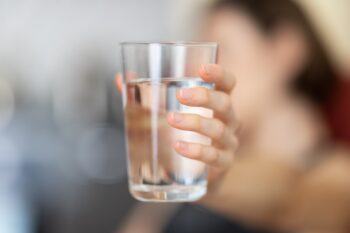Table of Contents :
The germination process
Once you have the quality seeds you want to base your cannabis plants on, the next step is to get those seeds to germinate.
For information on which seeds you should choose and how you should treat them, we refer to our seed guide.
There is no definitive recipe for how to proceed to get a cannabis seed to germinate, so what you will find here are only guidelines for how you should proceed to get a seed to germinate.
In order for a seed to germinate, you need water, heat, oxygen and darkness.
The most common method is the “two layer with toilet paper method”. I prefer to combine this method with the “glass of water” method. The procedure can be explained as follows:
” A glass of water method “
Start by filling a glass with drinking water. Then pour your seeds into this glass and place the glass with the liquid seeds in a dark, warm place. E.g. in a kitchen cupboard or your desk drawer.
Ideally, you should put the glass with the seeds in a dark place that keeps between 26 and 30 degrees Celsius. Temperatures above 32 degrees Celsius can cause the seeds to die, so be careful not to place them in too hot a location.
The method is recommended because the first thing a seed has to do before it germinates is to absorb enough moisture. Nothing gives the seeds more water than letting them float in a glass of water.
Take the jar out of the dark place once a day to check if the seed has germinated. When it germinates you will see a white tap sticking out from the seed. This is the first phase of forming roots. When the roots are 5-8 mm long, it is time to plant the seed in a small pot with organic soil.
If the seed has not germinated, place the glass back in its dark place and check again the next day. Most seeds will germinate after 2 days, but some seeds need up to 1 week in a glass of water before they germinate.
Not all seeds will germinate in a glass of water. Many seeds will sink to the bottom of the jar when saturated with water. When the seed sinks to the bottom of the glass, take the seed out and place it between two wet sheets of toilet paper. This is important, as the seed needs oxygen to survive. If it remains on the bottom for a long time, the seed will drown.
Those seeds that have neither germinated nor sunk after 7 days when you stir the water are most likely dead and will never germinate.
” Two layer with toilet paper method “
The most common method to get a seed to germinate is to take a plate and place two layers of toilet paper on top of the plate. Moisten the toilet paper with water from a spray bottle. Place the seeds on top of the toilet paper and then place another two layers of toilet paper on top. Then moisten these with water from a spray bottle, and place a plate upside down on top of the first plate to form a dome.
Place the plate in a warm, dark place and take the plate out daily to check if the seed has germinated. Spray the toilet paper daily with water to ensure that the papers do not dry out. The papers should lie moist, but not float in water.
If the seed has not germinated after 5-7 days, it is dead.
Seeding pot
When the seed germinates, place it in a seeding pot as soon as possible. That is, a small plant pot with organic soil. The pot should not be more than 12 cm in width and it must have good drainage at the bottom.
Water the soil well and poke a hole about 1 cm deep. Place the seed, root first, into this hole using sterilized tweezers. Never touch the seed. The seed is in a very vulnerable stage now and must be handled with utmost care. Cover the surface where the seed lies and place the pot in a warm place with lots of light. This root will immediately begin to develop and grow downwards, while the stem will grow upwards.
Equipment
If you live in a cold area, it may be an idea to put the seeding pot on a heating mat that keeps between 26-30 degrees. White LED light placed 15-25 cm from the seeding pot is recommended.
Cotyledons
When the stem reaches sunlight, the plant will begin to produce its first two oval leaves from the seed’s protected sheath. These two leaves are called cotyledons, and tell that the seed is now a seedling!
These first leaves are responsible for taking in sunlight so that the plant can grow healthy and stable.
Condition
The ideal conditions after you have put the germinated seed in the soil until the seed becomes a seedling are:
Lightning
Place a fluorescent grow light about two inches from the top of your medium for 18 hours per day. You don’t need a strong light for them in the beginning.
Humidity
Keep your seeds in a wet humidity at around 65 – 80%.
Water
Water the soil every day with a sprayer to make sure the soil is moist and avoid overwatering. Do not pour lots of water from a water bottle over the pot, as the seed has not yet developed roots and may be washed away or drowned.
Nutrition/fertilizer
There is enough nutrition in a seed to feed a sprout for about two to three weeks. It is therefore not necessary to fertilize the plant at this stage.
Read more: The life cycle of a cannabis plant
